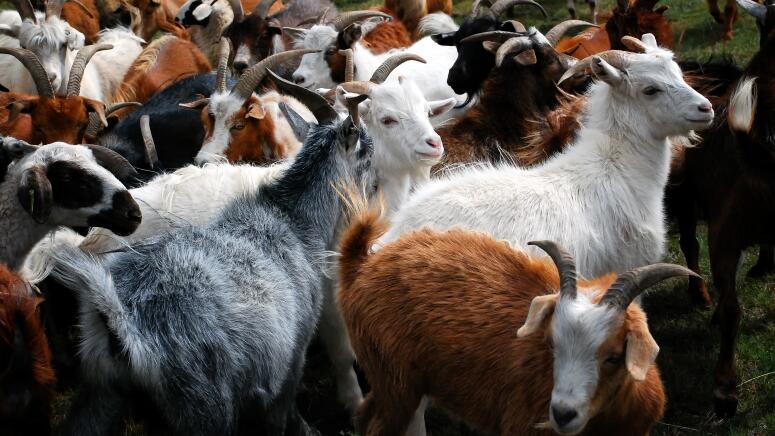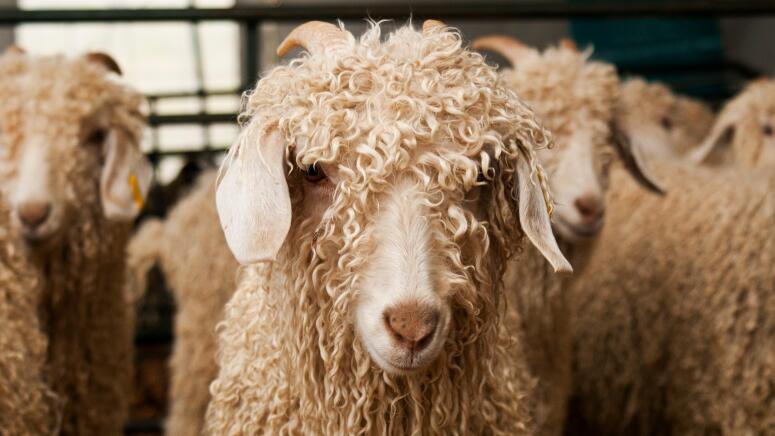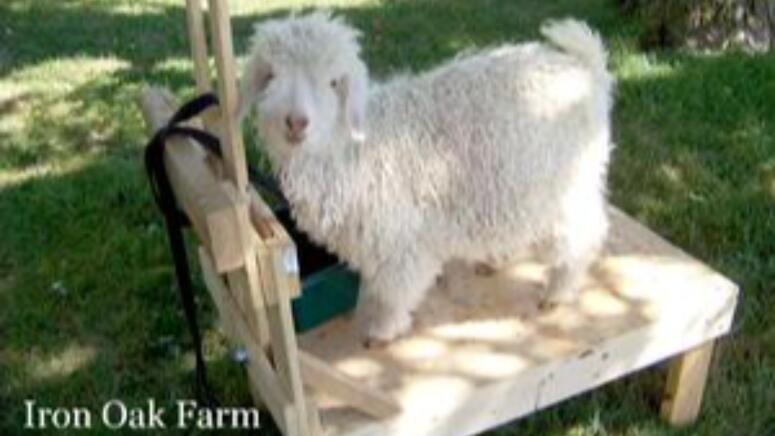Posted by Jennifer Sartell, Professional Homesteader & Blogger, Fri, May 25, 2018
Raising Fiber Goats
If you own a cashmere sweater, you can thank a goat. When most people think of fiber animals, a sheep is probably the first that comes to mind. And it’s true that, with more than 1,000 distinct sheep breeds worldwide, sheep do dominate the world of fiber.
But goats are the producers of two of the warmest and most luxurious fibers in the world. Both cashmere and mohair come from goats.

Cashmere Goats
Cashmere can come from two different types of goat. There are actual cashmere breeds including:
- Australian Cashmere Goat
- Changthangi Cashmere Goat
- Hexi Inner Mongolia Cashmere Goat
- Liaoning Cashmere Goat
- Licheng Daqing Goat
- Luliang black Goat
- Tibetan Plateau Goat
- Wuzhumuqin
- Zalaa Jinst White Goat
- Zhongwei Cashmere Goat
But cashmere can also be produced by crossing a non–fiber producing goat with an Angora (more about this below).
You may have wondered why cashmere sweaters cost so much. Much of the cost comes from the labor-intensive way in which cashmere needs to be harvested from the goat. Cashmere isn’t shorn from the goat the way wool is shorn from a sheep; instead, it must be brushed out and away from the guard hairs.
Cashmere goats have a double coat similar to that of a shedding dog such as a Golden Retriever or German Shepherd. They have a layer of more permanent hairs called guard hairs; then, as the days get shorter and the weather gets cooler, they grow an undercoat of soft, down-like fur. In the spring, they shed this undercoat. This is the cashmere fiber.
Cashmere goats also don’t produce as much fiber per animal because half of the coat is dedicated to guard hairs. When you shear sheep, for example, to the skin, ALL the wool is usable.

Angora Goats
Angora goats come from Ankara (Angora), Turkey. When people hear that we raise Angora goats, many think that they produce the fiber angora. This is understandable considering the name, but Angora is actually produced from rabbits that hail from the same region.
Angora goats produce mohair, one of the warmest fibers in the world. It’s also soft, silky and luxurious. Mohair goats are the most productive fiber-producing animals. They are shorn twice a year (we shear in March and September) as opposed to once a year like sheep.
The most common color for an Angora goat is white, but other colors are gaining popularity. Unlike dairy goats, the wethered male is the most valuable goat. You will get the most fiber from a neutered male because the goat doesn’t have to use energy producing hormones and young.
Cashmere-Producing Crosses
If you cross a non–fiber producing goat with an Angora goat, many times the offspring will produce a cashmere undercoat. The Pygora is one of the most popular of these crosses. As the name suggests, it is a cross between a Pygmy and an Angora.
A few years back, our Angora buck knocked the gate off the hinges of his pen and got to one of our Nubian does. The resulting kid was black with a beautiful soft gray cashmere coat.
General Care for Fiber-Producing Goats
Fiber goats can be raised much like other goat breeds, with a few exceptions. Because fiber production takes so much from the animal, they are considered a more delicate breed. They are also very docile and calm compared to other goats.
Conditions. They MUST be kept dry. Because of all that wool, they are more susceptible to pneumonia than other breeds.

Shearing Your Goats
If you plan on adding fiber goats to your herd, you need to get proper wool shears and learn the craft of shearing. Or you can hire someone to come and shear your goats.
Lice prevention.
Fiber animals are prone to lice infestations. In addition to regular worming, lice prevention should be a regular part of your routine. We use a pour-on variety, similar to flea and tick prevention in dogs.
Diet.
Fiber goats need a high-protein diet in the form of grain or alfalfa hay. We feed our Angoras a diet similar to that of our dairy goats in milk. They also benefit from the addition of black oil sunflower seeds. The fats in the seeds assist in lanolin production and thus help protect and waterproof the fleece.
Disbudding and Dehorning.
Fiber goats should NEVER be disbudded or dehorned. A goat’s horns are not only used for self-defense, but also act as a cooling system in hot weather. If you remove the horns from a fiber goat, they will most likely suffer from heat stroke in warm weather under all that wool.
Author Profile: Jennifer Sartell
Jennifer Sartell is the primary caretaker of all animals on her and her husband’s farm in Fenton, MI. With a passion for living a simple life, Jennifer enjoys creating art, taking in nature, raising animals and has developed a deep appreciation for homesteading. Jennifer and her husband, Zach, currently raise goats and poultry.
Her vast amount of experience on the farm includes, but is not limited to: milking, shearing, hoof trimming, vaccine administration, assisting in animal births, dehorning, egg collecting, chick and turkey hatching, feeding, watering, etc. She can also cook a mean farm-to-table meal and when the day is done has documented and photographed their day on the farm.
More Blogs by Jennifer Sartell
- https://www.mannapro.com/homestead/caring-for-pregnant-does-part-2
- https://www.mannapro.com/homestead/caring-for-pregnant-does-part-1
- https://www.mannapro.com/homestead/preparing-caring-for-goats-in-winter
- https://www.mannapro.com/homestead/dairygoatbreeds
- https://www.mannapro.com/homestead/preparing-the-kidding-stall-part-2
- https://www.mannapro.com/homestead/a-guide-to-buying-a-new-goat
- https://www.mannapro.com/homestead/raising-kids-dehorning-wethering
- https://www.mannapro.com/homestead/milking-a-goat
- https://www.mannapro.com/homestead/raising-fiber-goats-101
- https://www.mannapro.com/homestead/hoof-care-for-goats
- https://www.mannapro.com/homestead/putting-together-a-goat-birthing-kit
- https://www.mannapro.com/homestead/preparing-the-kidding-stall-part-1
- https://www.mannapro.com/homestead/breaking-down-the-goat-diet
- https://www.mannapro.com/homestead/birthing-goat-kids
- https://www.mannapro.com/homestead/dealing-with-goat-scours
- https://www.mannapro.com/homestead/feeding-baking-soda-to-your-goats
- https://www.mannapro.com/homestead/pros-cons-and-facts-about-raising-turkeys
- https://www.mannapro.com/homestead/best-breeds-for-raising-chickens-with-children
- https://www.mannapro.com/homestead/a-guide-to-small-goat-breeds

